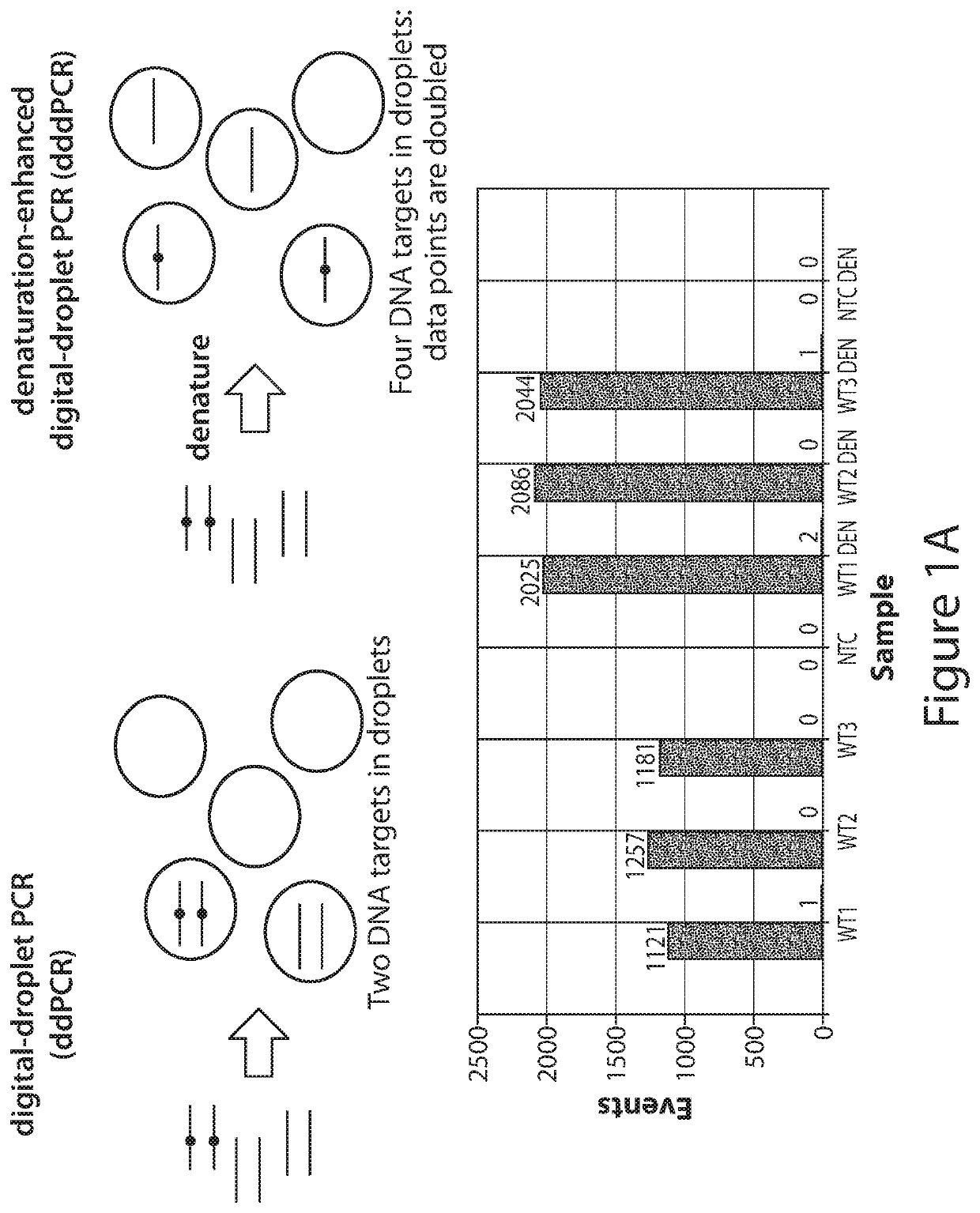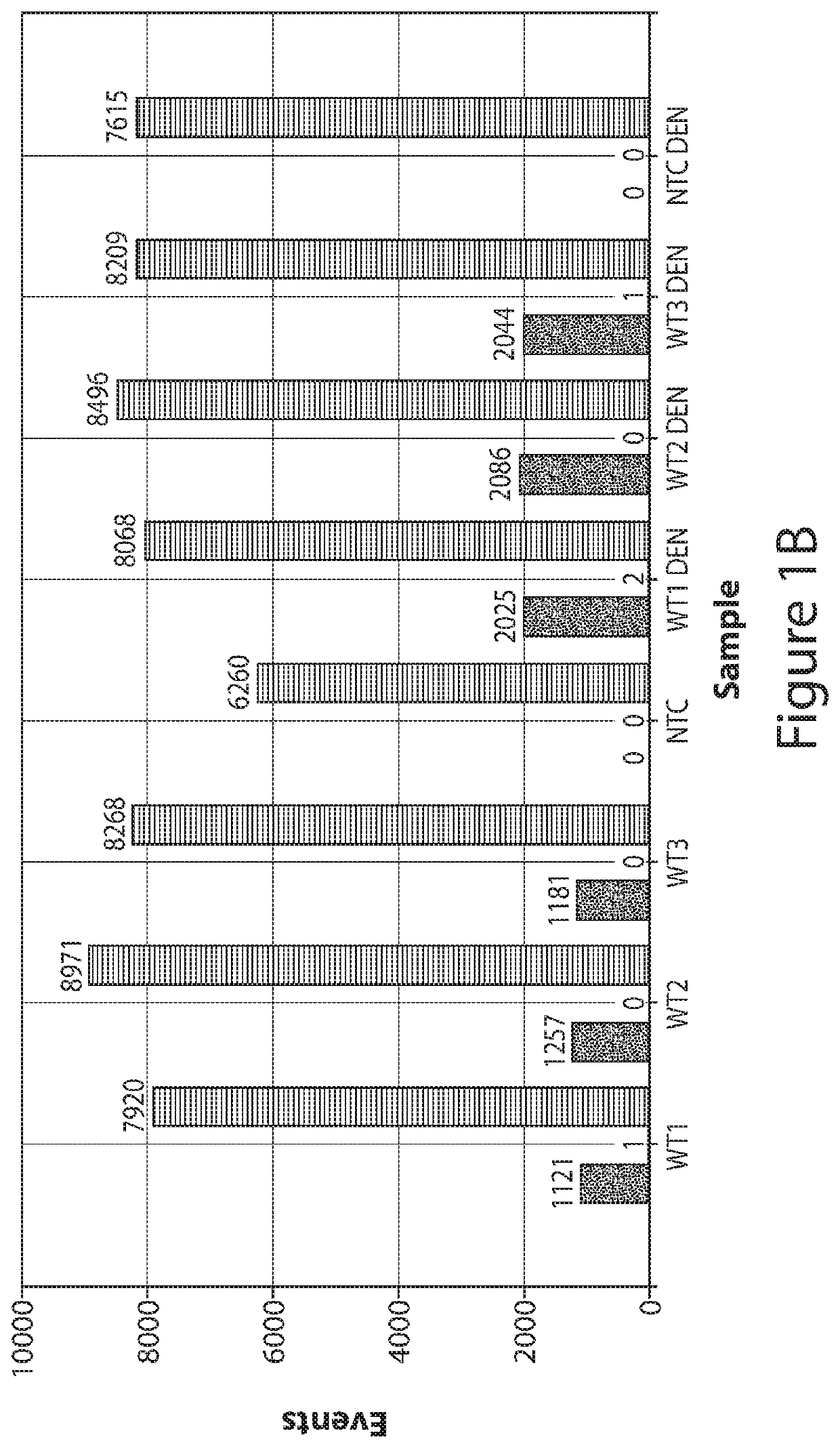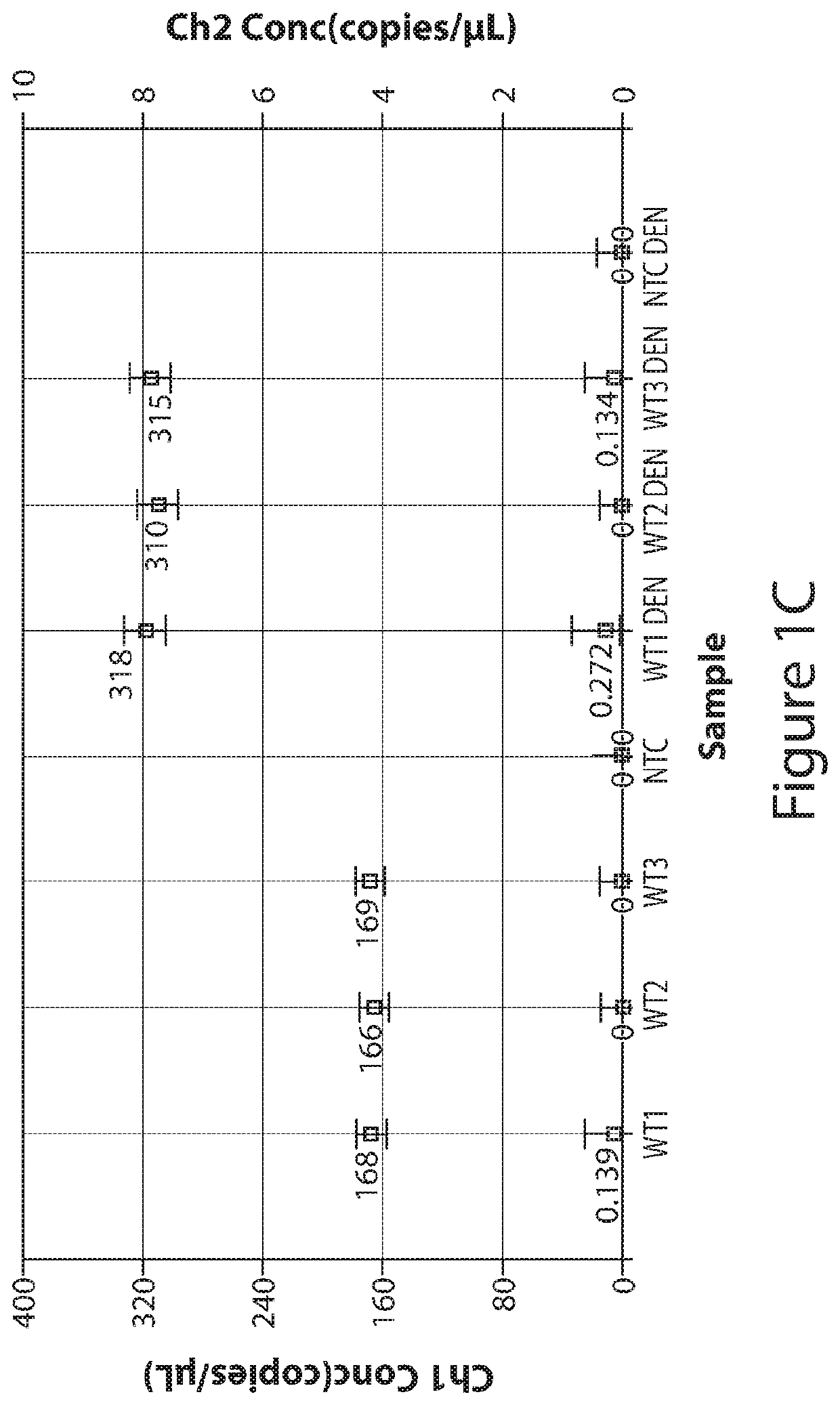Denaturation-enhanced DNA mutation testing for limited biological specimens
a dna mutation and limited technology, applied in the field of denaturation-enhanced dna mutation testing for limited biological specimens, can solve the problems of inability to improve detection limits past dna input limitations, compromise of technology, and inability to quantitatively limit input nucleic acids, so as to reduce the damage of single-stranded nucleic acids and reduce the damage of formed single-stranded nucleic acids
- Summary
- Abstract
- Description
- Claims
- Application Information
AI Technical Summary
Benefits of technology
Problems solved by technology
Method used
Image
Examples
example 1
REFERENCES FOR EXAMPLE 1
[0129][1] Diehl F, Schmidt K, Choti M A, Romans K, Goodman S, Li M, Thornton K, Agrawal N, Sokoll L, Szabo S A, Kinzler K W, Vogelstein B, Diaz L A, Jr.: Circulating mutant DNA to assess tumor dynamics. Nature medicine 2008, 14:985-90.[0130][2] Thierry A R, Mouliere F, El Messaoudi S, Mollevi C, Lopez-Crapez E, Rolet F, Gillet B, Gongora C, Dechelotte P, Robert B, Del Rio M, Lamy P J, Bibeau F, Nouaille M, Loriot V, Jarrousse A S, Molina F, Mathonnet M, Pezet D, Ychou M: Clinical validation of the detection of KRAS and BRAF mutations from circulating tumor DNA. Nature medicine 2014, 20:430-5.[0131][3] Newman A M, Bratman S V, To J, Wynne J F, Eclov N C, Modlin L A, Liu C L, Neal J W, Wakelee H A, Merritt R E, Shrager J B, Loo B W, Jr., Alizadeh A A, Diehn M: An ultrasensitive method for quantitating circulating tumor DNA with broad patient coverage. Nature medicine 2014, 20:548-54.[0132][4] Bettegowda C, Sausen M, Leary R J, Kinde I, Wang Y, Agrawal N, Bartle...
example 2
[0150]Ability to accurately and efficiently detect rare mutations is valuable and can be used to determine course of therapy and monitor efficacy of therapy over time. Known rare mutations can be identified in cfDNA via liquid biopsy using advanced PCR methods such as digital PCR (dPCR) and digital droplet (ddPCR) methods. In standard PCR, one reaction is carried out per single sample whereas for digital PCR the sample is separated into a large number of partitions, or compartments, and the reaction is carried out in each partition individually (see FIG. 8). This separation allows for a more reliable collection and more sensitive measurement of nucleic acid amounts.
[0151]Despite advances over regular PCR, diagnostic results are often comprised in digital PCR. For example, limited amount of cfDNA can be obtained from a blood draw, excess amount of WT DNA in the sample limits the amount / accuracy of information, testing for multiple targets requires larger amounts of cfDNA, and amplify...
example 3
ion-Enhanced Digital Droplet PCR for Liquid Biopsies
[0154]The following demonstrates that by applying complete denaturation of double-stranded nucleic acid to form single-stranded nucleic acid prior to partitioning (e.g., by droplet formation in ddPCR) of the nucleic acid sample, the number of positive partitions (e.g., droplets) increase. Denaturation-enhanced dPCR (e.g., denaturation-enhanced ddPCR (dddPCR)) was applied using circulating-DNA from volunteers and cancer patients for commonly-used mutations. dddPCR using genomic-DNA results in a 1.9-2-fold-increase in data-positive droplets, while dddPCR applied on highly-fragmented circulating-DNA results to 1.6-1.7-fold increase. Moreover, end-repair of circulating-DNA before denaturation enables circulating-DNA to display 1.9-2-fold increase in data-positive signals, like genomic-DNA. The data indicate that doubling of data-positive droplets from a given DNA input doubles the number of potential ddPCR assays and improves ddPCR acc...
PUM
| Property | Measurement | Unit |
|---|---|---|
| temperature | aaaaa | aaaaa |
| temperature | aaaaa | aaaaa |
| temperature | aaaaa | aaaaa |
Abstract
Description
Claims
Application Information
 Login to View More
Login to View More - R&D
- Intellectual Property
- Life Sciences
- Materials
- Tech Scout
- Unparalleled Data Quality
- Higher Quality Content
- 60% Fewer Hallucinations
Browse by: Latest US Patents, China's latest patents, Technical Efficacy Thesaurus, Application Domain, Technology Topic, Popular Technical Reports.
© 2025 PatSnap. All rights reserved.Legal|Privacy policy|Modern Slavery Act Transparency Statement|Sitemap|About US| Contact US: help@patsnap.com



